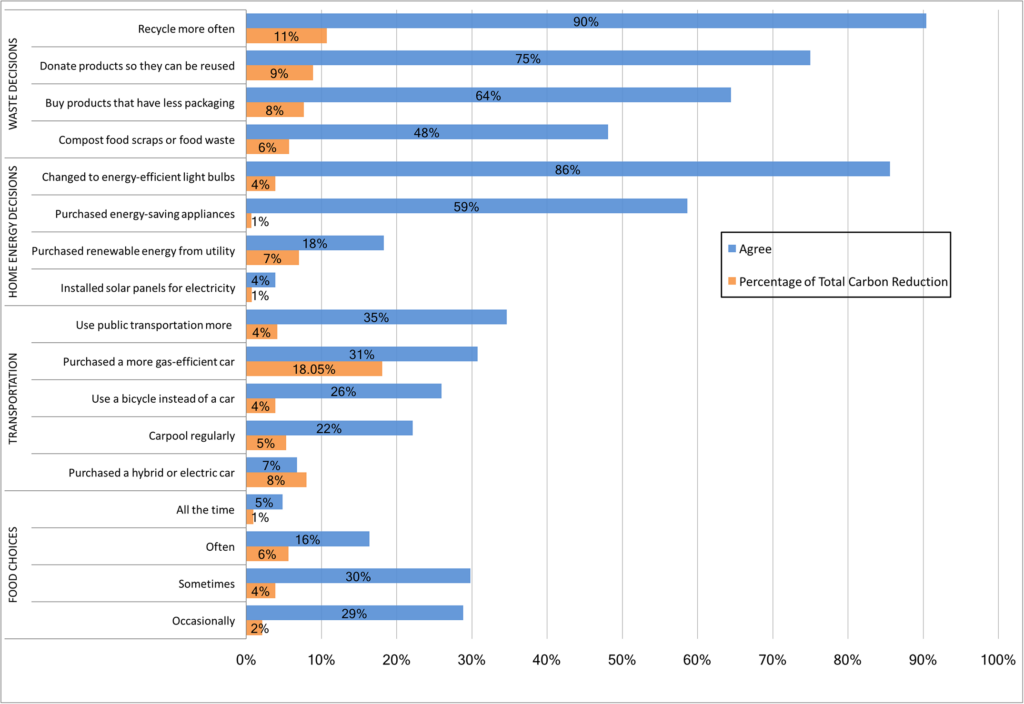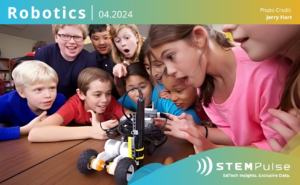Environmental science is a fast-growing market globally as countries and organizations tackle complex issues surrounding climate change and sustainability. Currently valued at 626 Billion USD, it’s expected to grow at a compound annual growth rate (CAGR) of 5.3% until 2030, which, by some estimates, will result in a 955.9 Billion USD market by the end of the decade. (Environmental Technology Market Size & Share Report, 2030, 2022)
As the value of the environmental science and technology market rises, so too does the demand for skilled labor. The U.S. Bureau of Labor Statistics projects that the demand for environmental scientists will grow by 5% (Dr. Chris Karmosky, 2024), with estimates placing the number of anticipated job openings anywhere between 3,800 (Dr. Chris Karmosky, 2024) and 6,900. (Environmental Scientists and Specialists, 2024)
Education as a Strategy for Positive Environmental Change
While many environmental scientists and reformists look toward clean energy, sustainable practices, and more environmentally conscious policies, we, perhaps, overlook the most impactful tool at our disposal in the fight against climate change. Education “is a leading predictor of climate change awareness among younger generations, empowering them to become informed citizens and take decisive action about protecting the planet.” (Marsh, 2024)

(Cordero, E. C., Centeno, D., & Anne Marie Todd. (2020). The role of climate change education on individual lifetime carbon emissions. PloS One, 15(2), e0206266–e0206266. https://doi.org/10.1371/journal.pone.0206266)
Unfortunately, only about half of national education curricula worldwide make any reference to climate change, and when mentioned, it’s usually brief and superficial. (Marsh, 2024) With little professional development available to teachers and few high-quality resources available to students, it’s no surprise then that fewer than 40% of teachers felt confident in teaching about the severity of climate change, with only about ⅓ of teachers feeling confident in explaining the effects of climate change on their locality. (Jensen, 2024) While those numbers are sobering, the good news is that even a small increase in climate education goes a long way.
A recent study, conducted by Cordero, Conteno, and Todd of San José State University, suggests that providing access to a year-long university course directly relating climate change and individual carbon emissions can significantly impact long-term behaviors and life choices. Graduates of the course reported lifestyle changes that significantly reduced individual carbon emissions. Graduates showed an average reduction in carbon emissions of 2.86 tons per year, with around ¾ reporting a reduction of anywhere between 2 and 5 tons per year. The key to creating meaningful and lasting behavioral changes comes from making climate change personally relevant, providing spaces for individuals to practice explaining the actions they were taking and why, and outlining clear and actionable steps individuals can take to reduce their carbon footprint.

Cordero, E. C., Centeno, D., & Anne Marie Todd. (2020). The role of climate change education on individual lifetime carbon emissions. PLoS ONE, 15(2), e0206266–e0206266. https://doi.org/10.1371/journal.pone.0206266
Global organizations, like the United Nations, and international groups, like COP28, are aiming to make sweeping changes in environmental science education by committing resources and funds to efforts like Greening Education Partnership Declaration, a commitment by 38 countries to integrate climate education into their national curricula. Similarly, the United Arab Emirates announced $200 million in funding to improve outcomes for young people in Africa by emphasizing quality health and educational services.
Why isn’t Environmental Science included in STEM consistently?
In short, globally, there’s a sense that environmental science and climate awareness education are imperative for our students. Yet only about half of national education curricula worldwide make any reference to climate change, and when it is mentioned, it’s usually brief and superficial (Marsh, 2024). But why?
- Lack of Preparedness: Less than 40% of teachers feel confident teaching about climate change’s severity (Jensen, 2024), with only 21% feeling “very informed” on the subject; this lack of confidence is particularly pronounced among elementary and suburban teachers (The State of Climate Change Education Findings from a National Survey of Educators, 2022), likely due to limited professional development and high-quality resources.
- Resource Availability: Further exacerbating this feeling of unpreparedness is that about half of teachers say that they don’t have the resources available to consistently teach this content. (The State of Climate Change Education Findings from a National Survey of Educators, 2022)
- Potential Parental and Community Backlash: Administrators, who often determine the content and curricula taught within their school and/or district, are concerned about the potential backlash from parents surrounding teaching climate change. In fact, 85% of administrators are worried or very worried about parent complaints if climate change is included in school/district curricula
There are no quick solutions to any of these issues, period. Addressing each is complex, requiring creativity, social and political awareness, and no small amount of courage.
Thought Leadership in Environmental Science
We’ve gathered a list of resources and individuals that we feel are particularly useful as you think about how to integrate environmental science, climate change, and/or climate justice education in your classroom, district, or product offerings. Happy reading!
- STEM Teaching Tools – a curated list of resources designed for traditional and non-traditional teaching spaces aimed at supporting educators as they discuss “complex, but urgent” facets of justice-centered climate learning.
- The Nature Conservancy – a global environmental nonprofit operating in over 70 countries and staffed by more than 400 scientists, the Nature Conservancy focuses on providing innovative solutions in line with their “conservation by design” approach.
- Christina Figueres – the former Executive Secretary of the United Nations’ Framework Convention on Climate Change, provides invaluable insights into international climate policy and negotiations. Her expertise would be particularly useful for creating content related to climate action and policy-making processes.
- Nicholas Stern – the author and creator of the Stern Review, provides unique perspectives on the economics of climate change and would be an excellent resource for product managers and curriculum developers looking to include economics into their environmental science curricula
- Earth Guardians – a youth-led organization, this group helps to engage younger generations in environmental activism, highlighting education as a method for systemic change. Their perspective is particularly helpful for companies targeting the k-12 STEM education market
- Center for Climate and Energy Solutions – a nonprofit with expertise in climate policy, energy transitions, and technological innovation, may provide valuable insights and data for developing engaging and cutting-edge curricula and supports
- World Resources Institute – a global research organization focusing on the intersection of environmental change and socio-economic development. Their data can help to inform the creation of comprehensive and culturally relevant environmental science materials.
Resources
- https://www.grandviewresearch.com/industry-analysis/environmental-technology-market-report
- https://www.zippia.com/environmental-scientist-jobs/trends/
- https://www.bls.gov/ooh/life-physical-and-social-science/environmental-scientists-and-specialists.htm
- https://www.zippia.com/environmental-scientist-jobs/trends/
- https://earth.org/international-day-of-education-2024-is-the-education-system-overlooking-climate-change/
- https://naaee.org/sites/default/files/2023-02/NAAEE_State%20of%20Climate%20Change%20Education%20Report_SUBMITTED%2012_12_22%5B1%5D.pdf




